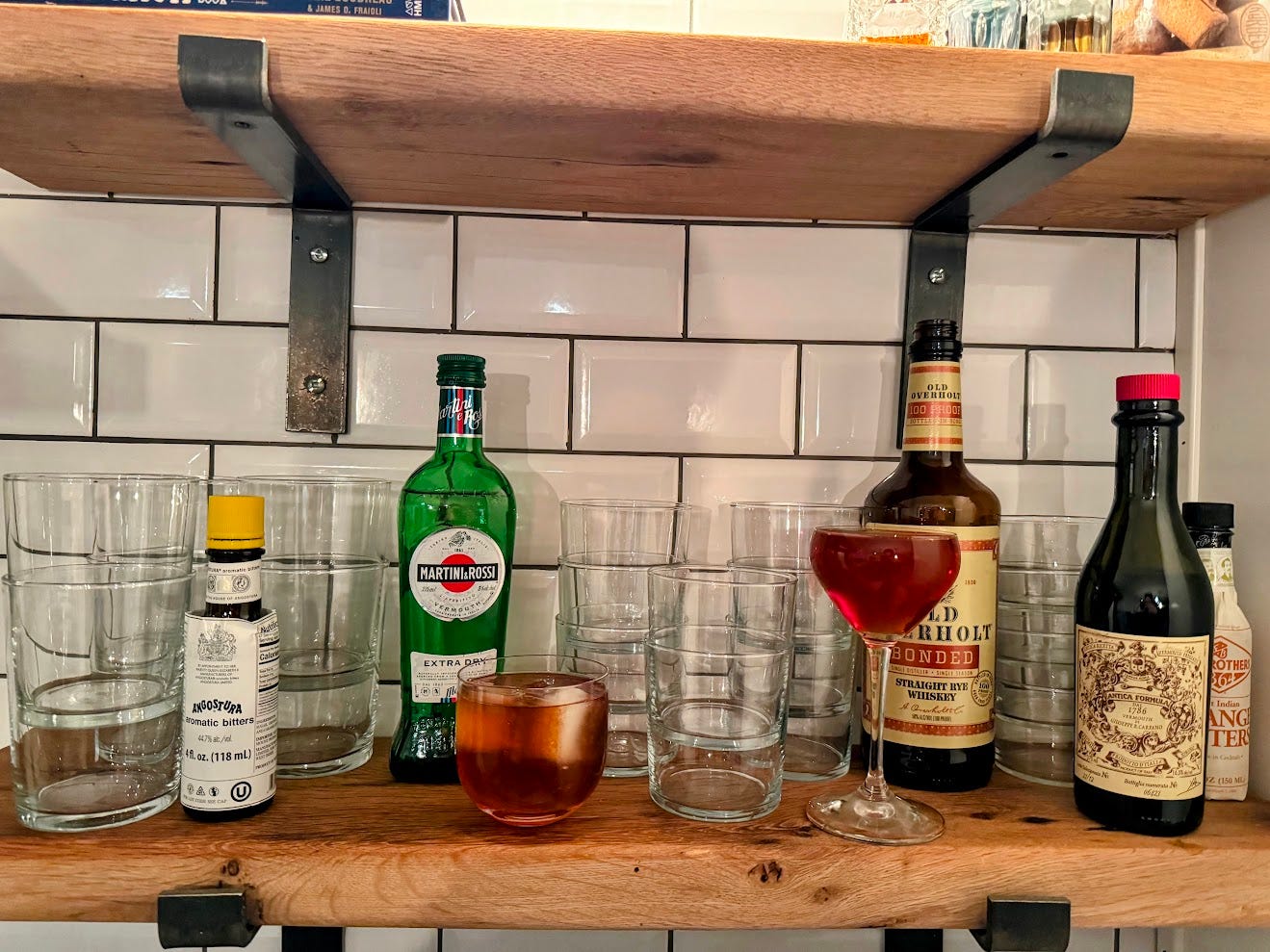Defining My House Manhattan Guardrails
Like "Martini," "Manhattan" often refers more to a style of drink than any specific cocktail these days. So what are the rules for my house version?
I’ve been writing this blog/newsletter/vanity project for five and a half years. Kind of. There have been some breaks. We don’t talk about those.
In all of that time, I’ve explicitly written about the Manhattan 7 times. I don’t care enough to do the research, but my hunch is that if there’s a cocktails I’ve mentioned more it’s the Negroni and even then it’s not by much.
But, with only a single exception, every mention of the Manhattan this publication has previously made has been about some variation of the classic. My de facto “house Manhattan” for years has actually been the Brooklyn. You could argue it’s actually been a Monte Carlo as well. Regardless, it sure hasn’t been Rye Whiskey and Sweet Vermouth with (or without) some Dry Vermouth as well.
But there’s something that doesn’t sit right with me about my house Manhattan not actually being a Manhattan at all. Both the Brooklyn and Monte Carlo are amazing drinks, but if someone asks for a Manhattan and gets one of those instead they’re going to (rightly) ask questions.
So, my House Manhattan will have Rye and Sweet Vermouth
And it won’t have any liqueur added, either - modifiers to the classic 2-to-1 ratio will be in the form of Dry Vermouth and bitters. And all of those things will be ingredients that have already been included in previous house recipes: Martini Dry, Carpano Antica, Angostura bitters, Orange bitters, and Aztec Chocolate bitters. The only thing missing is the Rye, specifically, one that’s bonded.
Old Overholt or Rittenhouse?
I got turned onto Old Overholt by a bartender in Seattle about 8 years ago, and it’s been my go-to ever since. For a while, I drank the “regular strength” because it was available for insanely cheap prices at the grocery store next to our apartment. But once it got harder to find (and more expensive) I switched up to the bonded expression. Bottled-in-bond really just means that its at least 50% alcohol - everything else about the distinction is table stakes today (but wasn’t at the turn of the 20th century).
But in researching the Manhattan, I couldn’t get past how many recipes from folks I really respect called explicitly for Rittenhouse. Also a bonded rye, I’ve always known it was a bartender favorite but never had really paid it much attention. So, I’ve been tasting them side-by-side for a while now.
The Old Overholt to me drinks more like a traditional whiskey - there’s a lot of flavor happening and a prominent one is wood. It’s hot and spicy, like you expect a rye to be, but it starts with wood and gives way to the spicy, dry finish. There’s still some sweetness here.
By comparison, the Rittenhouse is a spice bomb. There’s no wood in sight here, and the amount of spice almost makes individual flavors difficult to pick out. The longer its out in a glass, though, the more it opens up and you can start tasting some individual notes.
On its own, I definitely prefer my trust OOB. But, to really know for sure, I’m going to be testing each of them in some “classic” Manhattan preps and see which one sticks!


